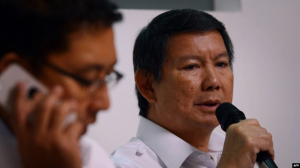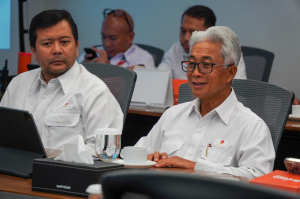New ESDM Ministry rule offers hope for accelerated energy transition, creates gaps
Experts have warned that the Minister of Energy and Mineral Resources (ESDM) Regulation No. 10/2025 on Energy Transition Roadmap for the Electricity Sector that is meant as a legal framework for early retirement of coal-fired power plants (CFPPs) lacks critical details and may hinder Indonesia's climate goals if not improved.
Sartika Nur Shalati, Policy Strategist at energy watchdog CERAH, welcomed the ministerial regulation as a progressive step for Indonesia's energy transition, but emphasized on several critical omissions.
“As an energy transition roadmap, this regulation fails to specify the total capacity or identify which CFPPs are slated for early retirement,” Sartika said in a statement on Tuesday, April 22, 2025.
The regulation mandates a comprehensive feasibility assessment to determine which CFPPs can be decommissioned. Criteria include plant capacity and age, utilization rates, greenhouse gas emissions, economic value, availability of domestic and foreign funding, as well as technology support. It also requires consideration of power grid reliability, electricity production costs, and the principle of a “Just Energy Transition.”
“This makes early CFPP retirement highly conditional, depending on multiple complex factors. The regulation should list the specific plants targeted for early closure, especially since various studies have already identified feasible candidates,” she argued.
Although aligned with the National Energy Policy (KEN), which promotes a gradual “phase-down” of coal usage, the regulation diverges from President Prabowo Subianto’s bold commitment at the G20 Summit in November 2024, where he promised a full “phase-out” of CFPPs within 15 years, by 2040. Notably, Ministerial Regulation No. 10/2025 omits any specific deadline when all CFPPs must cease operations.
Wicaksono Gitawan, also a Policy Strategist at CERAH, pointed out that some provisions in the regulation are vague and could delay progress. He cited Article 12, which does not explain what will happen if the feasibility studies required for early CFPP retirement exceed the six-month timeframe.
“Such delays could derail the entire timeline for plant closures,” he warned.
He also highlighted the underdeveloped definition of “Just Energy Transition,” mentioned in Article 11. Despite being a core principle, it accounts for just 10.1 percent in the regulation’s assessment matrix.
“The government must clarify the framework of justice being applied here,” he added.
Further concerns arise from the regulation’s endorsement of controversial technologies. Ministerial Regulation No. 10/2025 allows for CFPP retrofitting through co-firing with biomass, hydrogen, or ammonia, and adoption of carbon capture and storage (CCS) technologies. This could mean coal plants will remain operational until 2060, undermining emission reduction targets.
Globally, CCS adoption at coal plants is limited and often unsuccessful, with many facilities failing to capture carbon emissions effectively.
“The electricity roadmap in this regulation mirrors the flawed strategies of the National Electricity General Plan (RUKN) 2024, continuing to promote false solutions that risk trapping Indonesia in a worsening climate crisis,” Wicaksono said.
Moreover, the regulation favors high-cost energy technologies, such as nuclear power and CCS. These could burden the national budget or lead to higher consumer electricity prices.
Sartika highlighted that managing nuclear waste − under the country’s Job Creation Law and Nuclear Energy Law − falls on the state, with estimated storage costs ranging from Rp2.2 billion (US$137,500 ) to Rp1.3 trillion (US$81.25 million) depending on the method.
Deploying CCS on all CFPPs, with a combined capacity of 54.7 gigawatts, could cost Indonesia an additional US$17 billion annually, further inflating electricity production costs.
“Ironically, one of the assessment criteria is the impact of rising production costs on electricity tariffs. Yet, integrating new technologies may significantly raise these costs,” Sartika noted.
She further stressed that renewable energy sources are now far more economically viable. According to the Institute for Essential Services Reform (IESR), the levelized cost of electricity (LCOE) for CFPPs ranges from US$4.5–11.9 per kWh, excluding CCS. In contrast, solar power ranges from US$4.1–10.1 per kWh. With CCS, coal becomes even less competitive.
Already have an account? Sign In
-
Start reading
Freemium
-
Monthly Subscription
30% OFF$26.03
$37.19/MonthCancel anytime
This offer is open to all new subscribers!
Subscribe now -
Yearly Subscription
33% OFF$228.13
$340.5/YearCancel anytime
This offer is open to all new subscribers!
Subscribe now






